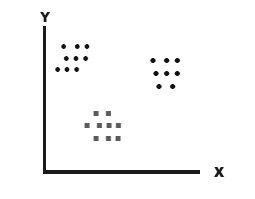SKEDSOFT
Introduction:-Human has ability to learn through classification. Human learn new concepts by relating them to existing knowledge and if unable to relate to something already known, then creates a new structure. The unsupervised ARTs named as ART1, ART2,ART3..Represent such human like learning ability.
ART is similar to many iterative clustering algorithms where each pattern is processed by
- Finding the "nearest cluster" seed/prototype/template to that pattern and then updating that cluster to be "closer" to the pattern.
- Here the measures "nearest" and "closer" can be defined in different ways in n-dimensional Euclidean space or an n-space. How ART is different from most other clustering algorithms is that it is capable of determining number of clusters through adaptation.
- ART allows a training example to modify an existing cluster only if the cluster is sufficiently close to the example, otherwise a new cluster is formed to handle the example
- To determine when a new cluster should be formed, ART uses a vigilance parameter as a threshold of similarity between patterns and clusters. ART networks can "discover" structure in the data by finding how the data is clustered. The ART networks are capable of developing stable clusters of arbitrary sequences of input patterns by self-organization.
Iterative Clustering
Organizing data into sensible groupings is one of the most fundamental modeof understanding and learning. Clustering is a way to form 'natural groupings' or clusters of patterns. Clustering is often called an unsupervised learning.
- Cluster analysis is the study of algorithms and methods for grouping, or clustering, objects according to measured or perceived intrinsiccharacteristics or similarity.
- Cluster analysis does not use category labels that tag objects with prior identifiers, i.e., class labels.
- The absence of category information, distinguishes the clustering (unsupervised learning) from the classification or discriminant analysis(supervised learning).
- The aim of clustering is exploratory in nature to find structure in data.
 Example
Example
Three natural groups of data points that are three natural clusters.In clustering, the task is to learn a classification from the data represented in an n-dimensional Euclidean space or an n-space.
− the data set is explored to find some intrinsic structures in them;
− no predefined classification of patterns are required;
The K-mean, ISODATA and Vector Quantization techniques are some of the decision theoretic approaches for cluster formation among unsupervised learning algorithms.